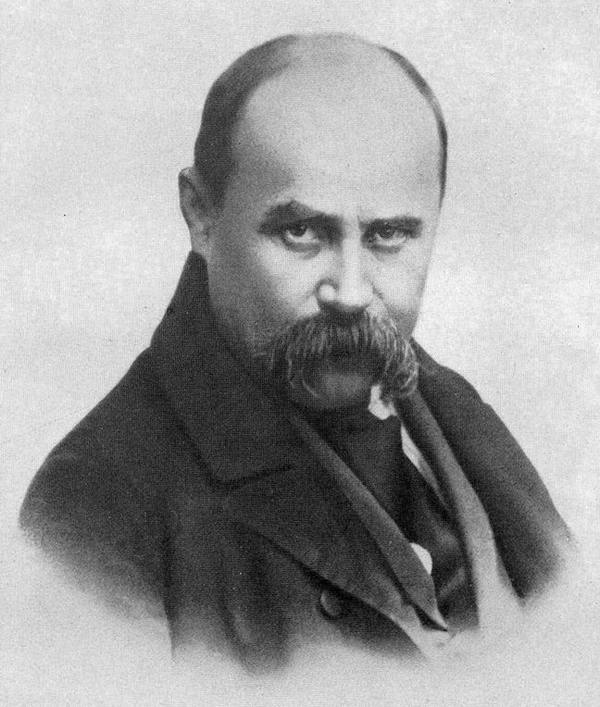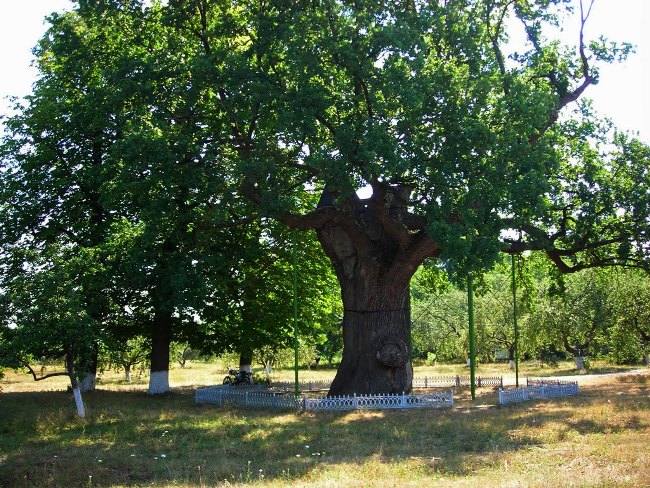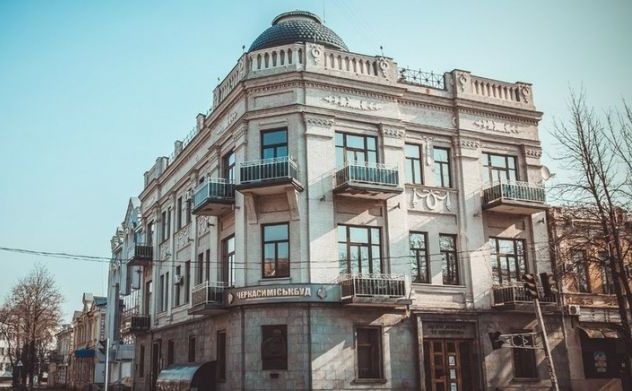Every year, March reminds Ukraine of a great event in the history and culture of the country. On March 9, 1814, in an ordinary family of serfs, in a small village, a baby was born, who was named Taras and whose fate turned out to be closely connected with the fate of the entire people and the country. From this little boy grew up a great Ukrainian poet, artist, a man called to express folk thoughts, known to the world as the Kobzar. We will tell you a little about various historical places associated with Shevchenko and his activities.
On March 10, 1861, after 47 years, Taras Shevchenko left this world, leaving the country a huge legacy and direction for movement. He lived in Ukraine itself for 14.5 years, but during this time he was able to visit more than 100 villages and cities of Ukraine. Taras spent the rest of his life outside the country that he loved so much and missed so much together with its people. And of course, there are places in Ukraine that are more intertwined with the life and activities of T. Shevchenko than others, and it is with them that we will introduce you today.
Homeland of the Kobzar
Taras Grigorovich was born in the village of Moryntsi, Zenkovsky district, now Cherkasy region. Taras's first years were spent in another village - in Kyrylivka (today Shevchenkove), where his parents moved soon after his birth. Having grown up, he began to serve in the village of Budyshche for the landowner Engelhardt. The village of Vilshany became the site for Taras's first step towards recognition. Today, these villages, which have become famous, are united into a single National Reserve "Taras Shevchenko's Homeland".
The village of Moryntsi will show you a Chumats's hut-museum that recreates Shevchenko's times. There are also two more huts there - Yakym Boyko, Taras's maternal grandfather, and Koliya's hut, where the Shevchenko family spent about a year and a half.
Entering Shevchenkove, the visitor admires the monument to a little boy - Taras.
The estate of the artist's father now houses a museum with family relics. Shevchenko's hut, which once burned down, was recreated based on one of the artist's pencil drawings.
At the entrance to this museum is a sculpture of Taras, depicted as a thirteen-year-old teenager.
Taras's "first university" - the clerk's house - also remained intact. Here the young artist studied literacy, having been sent here by his father.
In Budyshche there are three oak trees, whose age is already over a thousand years old. According to legend, in one of them there was a hollow, where Taras hid drawings from prying eyes. There is also a wooden windmill from Shevchenko's time, which is already very old, but which is not badly preserved.
Taras Grigorovich Museums in Kyiv. Memorable Places
In addition to these villages, there are memorable places in the capital of Ukraine - Kyiv. It is Kyiv that is closely connected with the whole life, as well as with the creative path of the Kobzar. Shevchenko spent time from the summer of 1843 until the spring of 1847 here, albeit with short breaks. Let's walk through these glorious places!
Shevchenko House-Museum is a branch of the National Museum, located in Shevchenko Lane, next to Independence Square. This is the oldest literary and memorial museum, founded in 1928. This house became a refuge for Taras Shevchenko in 1846-1847. The former Cossack, who persistently fought for his rights as a free man, who was constantly persecuted, was accused of using the "Little Russian language", as the Ukrainian language was then called, which was under ban. The house-museum still preserves the poet's room, where you can still see many of the poet's personal belongings, the atmosphere of that time is recreated in the room.
The National Museum also includes the Shevchenko Memorial House, located on Vyshgorodska Street, on the outskirts of Kyiv. Shevchenko lived here in 1859, when he returned to Ukraine after exile. The house is imbued with the atmosphere of that time, with the life of the Kyiv suburbs. Next to it grows a 400-year-old oak tree, in the shade of which the poet loved to spend time.
In Kyiv, the great Kobzar is respected and appreciated, a monument to him has been erected on the street of the same name, the National University, where the artist worked in the Archaeological Expedition (1845-1847), now bears the name of Taras. A square, the National Opera and Ballet Theater, gymnasium No. 109, and one of the metro stations are named in his honor.
Among the memorable places in Kyiv associated with the name of the Kobzar is the Church of the Nativity of Christ, from where the poet was seen off on his last journey. The coffin with the body of the outstanding poet was in this church at the time when he was transported to Kanev in 1861.
The city named after Shevchenko - Korsun-Shevchenkivskyi
A picturesque city on the Ros River, Korsun, once the residence of Hetman Bohdan Khmelnytsky, also welcomed Shevchenko in 1859. Taras stayed at the house of his cousin, Varfolomy Shevchenko. This city once attracted him with its history, here the poet walked along the park alleys, here he made sketches. Today this landscape park is also part of the Korsun-Shevchenko Historical and Cultural Reserve.
A multi-figured stele has been erected in this park based on Shevchenko's works. And, of course, a monument to Shevchenko has been erected in the city, and the city itself included the poet's name in its name in 1944.
Cherkasy. Museum of One Book
Cherkasy met Taras Shevchenko three times, and unfortunately, the third time was not by the poet's will: he was brought here after his arrest in 1959. When the Tsybulsky brothers bailed the artist out, releasing him from custody.
A long boulevard named after the poet runs along the entire city. The city has a Museum of One Book, which is located in the former house where the Tsybulsky brothers lived and where Taras Grigorovich himself lived for a time. The exposition of this museum includes a very valuable edition of "Kobzar", published during his lifetime, in 1860. Other editions of the book, translated into various languages from around the world, are also collected here.
Shevchenko Museum in Znamenka
The poet also visited the Yelysavetgrad land, which is now called the Kirovograd region, during his lifetime. In one of the towns of the region, Znamenka, there is a Taras Shevchenko museum. Its history is interesting because it was founded by the Kobzar's granddaughter (through Kateryna's older sister) - Kateryna Krasytska. It was she and her daughter who carefully collected materials and objects related to the poet's life and creative activity.
From this line, today the family tree of Taras Shevchenko has been traced to the tenth generation.
A love story in the Poltava region
Going through the places and dates of Shevchenko's life, we will definitely remember the village of Berezova Rudka (Pyriatyn district, Poltava region). In these places is the former estate of Platon and Viktor Zakrevsky, where Taras often visited. In this estate he painted portraits of Platon and his wife Anna, who was the poet's love and muse.
He met Anna in 1843 at one of the balls, taking as a souvenir a blue rose that adorned the woman's dress. This rose was carefully preserved by them as a relic. According to research, Taras and Anna met secretly in Berezovaya Rudka, and these meetings also took place in St. Petersburg.
Hanna Zakrevska died at the age of 35, and Taras Shevchenko, while in exile, dedicated more than one of his poems to this woman ("There is nothing worse than captivity"), in 1848 - "If We Met Again" and, as scientists believe, dedicated his poem "The Blind" to her.
Berezova Rudka is also interesting for its Zakrevski pyramid, similar to the Egyptian one, built by Ignatius, the son of Plato and Anna, on the grave of his parents. Ignatius was an ambassador to Egypt for a long time.
Reflection of Chernihiv region in Shevchenko's drawings
In Chernihiv region, Taras loved to come to Sidneve, the estate of the Lyzohub landowners. These picturesque places greatly inspired his creativity. The artist's drawings and sketches, inspired by the views of Chernihiv region, have survived to this day. Among them are sketches of Chernihiv, views of Kachanivka, the palace of Hetman Kyrylo Rozumovsky.
Chernihiv remembers Taras Shevchenko and preserves two monuments to him.
Kaniv. Tomb of Taras Shevchenko
Shevchenko's poem "The Testament" with his last will expressed - that he be buried "among the wide steppe in the dear Ukraine", everyone remembers from childhood. And his will was fulfilled. Shevchenko's body was brought from St. Petersburg in 1861, later reburied on a cliff, Chernecha Gora, in the city of Kaniv. Now this mountain is called Tarasova Gora, there is a monument to the poet on it: he seems to be surveying the Dnieper and the area.
And this very place became the Shevchenko National Reserve with the world's first folk museum "Tarasova Svitlytsia". Now this place has a cultural and educational character and is visited annually by thousands of tourists and city guests.
Lviv and Shevchenko places
For Lviv, which reveres Taras Shevchenko, he became a world genius, an avenue is named in his honor, as well as the Museum of Folk Architecture and Life "Shevchenko Grove". A huge monument has been erected here.
It is interesting that Shevchenko never actually visited the city during his entire life. But patriots of national culture, residents of the city of Lviv, wanted to immortalize the glory of the great poet in their city by creating a Shevchenko museum. The process of creating this unique museum was approached very creatively, for example, by artists - a rather interesting art project was born in their imagination. Its essence was that over the next eight years, Lviv artists traveled to places in Ukraine where Shevchenko had once visited (and not only in Ukraine - St. Petersburg, Vilnius, Kazakhstan, that is, even where he was in exile), and painted them. Later, these paintings formed an exhibition that became the basis of this small public museum created in honor of the poet. 26 artists traveled to the places of Taras' travels, creating over 100 paintings during this time. In addition to Lviv, these paintings were also exhibited in other different cities of the country. The room itself - the Shevchenko Museum can be visited in the Palace of Arts, on Kopernika Street.
Monuments to Shevchenko - the most interesting of them
Monuments in honor of the most famous poet and creator of Ukraine can be found in almost every city in the country. We will tell you about the most interesting of them, offering them to your attention.
The very first of the great monuments was erected in the city of Romny, in 1918. The Kharkiv monument can be called the best monument in the world from the point of view of Shevchenko's monumentalism. This is, in fact, not even one monument, but a whole composition of sculptures, made in the spirit of socialist realism. Shevchenko in this composition appears before us as a fighter, surrounded by a community of the same fighters, brothers in spirit. The monument is 16 m high, the figures are each 5.5 m, the monument itself is installed in the garden named after T.G. Shevchenko.
The monument, whose height is unmatched by any other, is located in the city of Kovel, in Volyn. It rises 7 m upwards, its weight reaches 20 tons. It is characterized by high artistic parameters.
Bukovina presents a monument to Taras Shevchenko in a rather unusual monumental pose for these structures. Tour guides have a whole story on this topic. Once, before the times of decommunization, there was a monument to Lenin in the mountains, which the locals really didn't like. Therefore, the head of the monument was removed. But the question arose: what to do with the monument if it doesn't have a head? But the Hutsuls are an inventive people, they attached the head of Shevchenko to the monument, and now there is a monument to one leader in the pose of another leader.
However, to be fair, similar stories are just as popular in the Rivne region. Museum staff don't really believe these stories: concrete is a fairly fragile material, and it would be impossible to saw off the head itself without damaging the rest of the monument. The local population of the town of Korets, which is located in the Rivne region, claim that near the monument that stands in their area, there is only one head of Shevchenko, and the rest are all from the Lenin monument.
Concluding our story, we can summarize that not only in Ukraine, but also far beyond our country, people honor the great Kobzar and his role in the history of the Ukrainian people. In the place where he was exiled to Mangyshlak Island and where he spent about seven years together with the Aral expedition exploring the Caspian Sea, there is now a Shevchenko fort, as well as a museum in his honor. Kazakhstan has also erected several monuments to Shevchenko. There are over 1,300 monuments in the world and in Ukraine. They are located in the USA in Washington, in Armenia in Yerevan, in Georgia in Tbilisi, in Italy in Rome, in Canada.
Based on materials from igotoworld.com























Write a comment